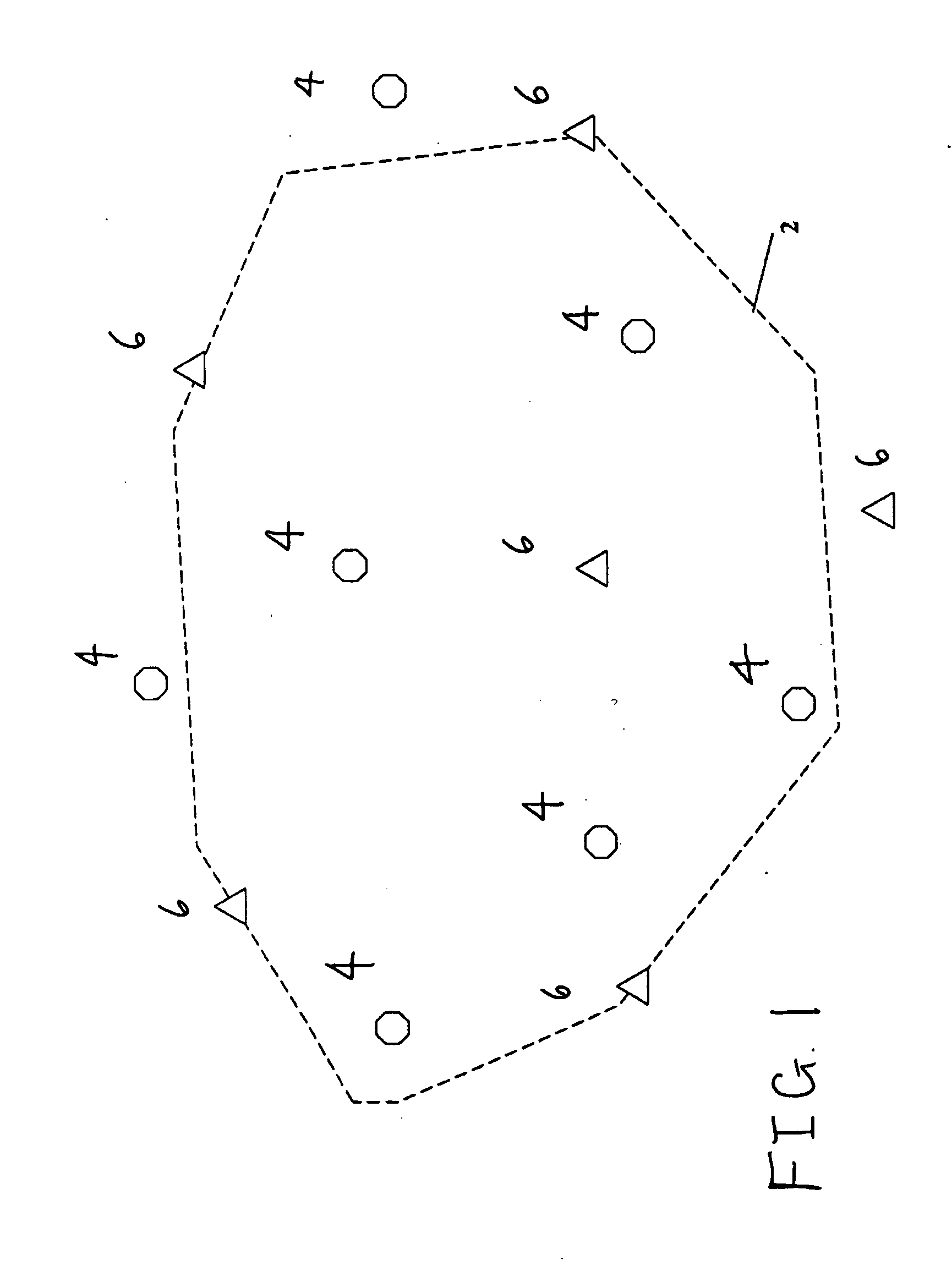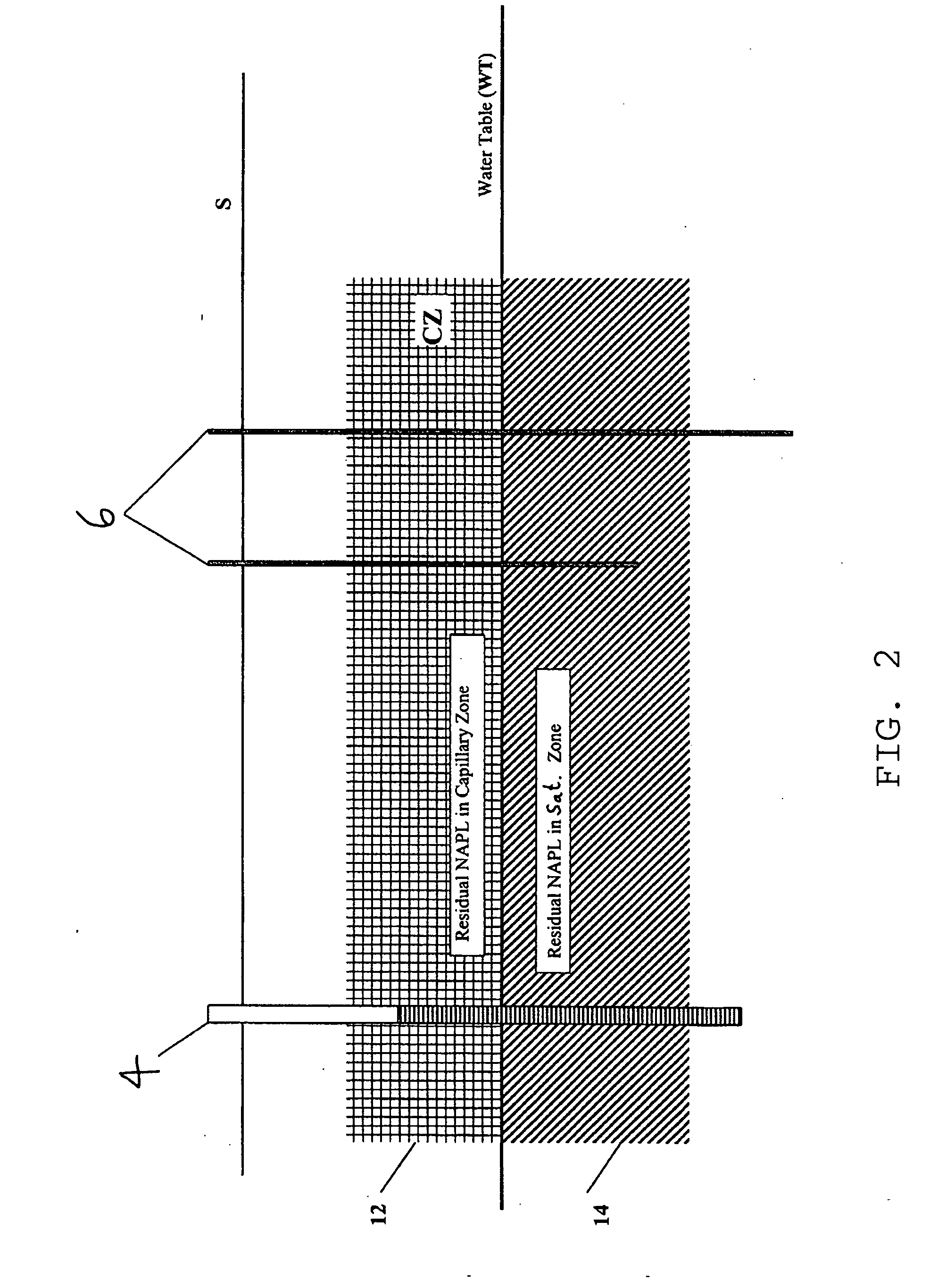Mass/Volume Estimation of Contamination, Removal and/or in situ Treatment Using Subsurface Pressure Waves
a technology of subsurface pressure and mass/volume estimation, which is applied in the direction of surveying, contaminated groundwater/leachate treatment, and well accessories, etc., can solve the problems of difficult and inability to completely remove non-aqueous phase liquids such as napl, and achieve the effect of enhancing degradation and/or transformation of at least a portion
- Summary
- Abstract
- Description
- Claims
- Application Information
AI Technical Summary
Benefits of technology
Problems solved by technology
Method used
Image
Examples
case 1
[0070] Static LNAPL thickness, T, decreases in well after estimate pulsing for a given duration.[0071]i. Measure the stabilized decrease in NAPL thickness in a monitoring well.[0072]ii. Subtract this thickness from the original entry pressure ρow value obtained from the laboratory (or literature value) for this parameter.[0073]iii. Insert this value into equation (1) and re-compute Tnew Calculate
T0−Tnew=ΔT [0074]ΔT corresponds to a new capillary pressure and NAPL retention function, which in turn corresponds to the amount of residual now available for recovery. Refer to FIG. 6.[0075]iv. Apply Step 2 to ΔT and re-calculate the new recoverable volume. The difference between the original volume and the new volume is the residual volume / mass available for removal.
[0076]The operating principal in Case 1 is that the SPT process stresses the soil / rock matrix and causes the pore bodies and pore throats to expand and increase their interconnectivity. The soil / rock matrix consists of pore bod...
case 2
[0078] Static LNAPL thickness, T, increases in well after test pulsing for a given duration.[0079]i. Measure the stabilized increase in LNAPL thickness. This increase above the static level is taken to be the new estimate of ρow.[0080]ii. Add this thickness to the original ρow value obtained from the laboratory (or literature value) for this parameter.[0081]iii. Insert this value into equation (1) and re-compute Tnew [0082]iv. Calculate
Tnew−T0=ΔT [0083]v. Apply Step 2 to ΔT and re-calculate the new recoverable volume. The difference is the amount of residual volume / mass removed.
[0084]The operating principal in Case 2 is identical to that in Case 1 except that the pore throat to pore body ratio is not increased significantly, or quickly enough, so that PC remains less than or equal to the entry (displacement) pressure ρow. In this instance, NAPL accumulates in the well from mobilized residual in response to pulsing and the thickness increases. The increase in NAPL thickness above sta...
PUM
| Property | Measurement | Unit |
|---|---|---|
| volume | aaaaa | aaaaa |
| thickness | aaaaa | aaaaa |
| stress | aaaaa | aaaaa |
Abstract
Description
Claims
Application Information
 Login to View More
Login to View More - R&D
- Intellectual Property
- Life Sciences
- Materials
- Tech Scout
- Unparalleled Data Quality
- Higher Quality Content
- 60% Fewer Hallucinations
Browse by: Latest US Patents, China's latest patents, Technical Efficacy Thesaurus, Application Domain, Technology Topic, Popular Technical Reports.
© 2025 PatSnap. All rights reserved.Legal|Privacy policy|Modern Slavery Act Transparency Statement|Sitemap|About US| Contact US: help@patsnap.com



